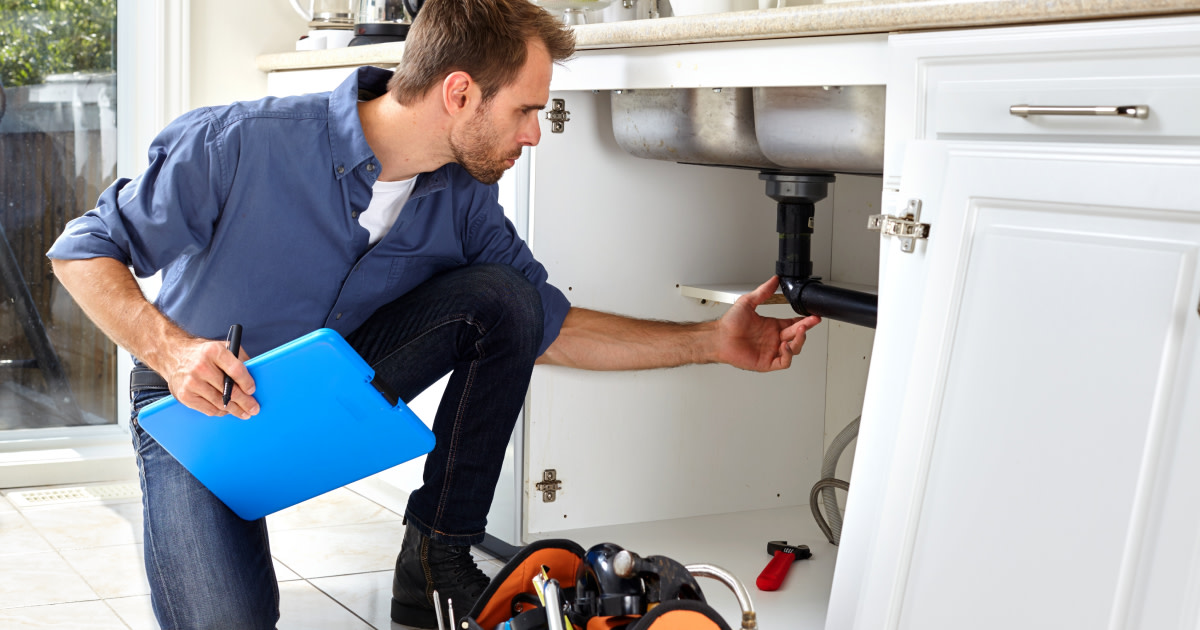Emergency Home Maintenance: How to Cover the Costs
WHAT YOU'LL LEARN
Tips to save smarter
How to handle unexpected costs
What insurance really covers
WHAT YOU'LL LEARN
Tips to save smarter
How to handle unexpected costs
What insurance really covers

It’s incredibly common to go into homeownership — especially as a new homeowner — without giving much thought to the ongoing maintenance expenses that come with it. While it’s not the most glamorous thing you’ll spend money on, home maintenance is inevitable.
Maybe the floors need refinishing, your windows are due for replacement, or you find yourself dealing with a plumbing emergency that needs immediate attention. None of these situations are cheap. Home repairs can take a huge bite out of your budget and, if you’re not financially prepared, they could even push you into debt.
Building a dedicated home repair fund gives you options, flexibility, and peace of mind (our specialty). But where do you start, and how much should you really be saving?
Understanding the “True Cost” of Homeownership
For most of us, saving money isn’t easy (and that’s okay). It’s so tempting to prioritize “now” experiences, like vacations or dining out, over “what if” expenses like a busted water heater or leaky roof.
One piece of advice we love to share: think of your personal finances the way you would a small business.
Step 1: Add up your total monthly net income.
Step 2: Subtract all recurring expenses (mortgage, utilities, car payment, etc.) to see your “profit.”
Step 3: Set aside 10–20% of that profit for savings.
This makes your savings feel intentional, like part of your plan rather than whatever’s left over.
But if you prefer more structure, try the 50/30/20 budget rule:
50% of net income → essentials (mortgage, utilities, groceries)
30% → flexible spending (dining out, hobbies, shopping)
20% → savings (both general savings and specific goals like home repairs)
A Note on Debt-to-Income
When you applied for your mortgage, your lender looked closely at your Debt-to-Income (DTI) ratio, also known as how much of your monthly income goes toward debts.
Expert Tip
Knowing your DTI isn’t just useful for mortgage approval; it’s a great tool to understand your overall financial picture as you plan for savings and future expenses.
How Much Should You Save for Home Maintenance Each Year?
Beyond general savings, it’s always a good idea to create a separate home repair fund. A separate account helps keep that money safe from temptation, so when a true emergency pops up, you’re more than prepared.
Expert Tip
A good rule of thumb is to save 1% of your home’s purchase price each year for maintenance and repairs.
Granted, not every year will look the same. Some years you may just need a few minor fixes, and others could bring a major repair, like replacing a roof or HVAC system. But consistent saving smooths out those chaotic ups and downs.
Why Lenders Require Reserve Funds Before You Buy a Home
If you’re in the process of buying a home, you might hear your lender mention reserve funds. These are liquid (readily accessible) savings that show you can comfortably cover your mortgage and other expenses — including surprise repairs — without financial strain.
Expert Tip
Most lenders require three to six months of reserves, but that can vary based on your income and loan type.
These requirements aren’t just for the lender’s peace of mind — they’re for yours too. Knowing you have a cushion in place makes the homebuying process far less stressful.
Home Warranties vs. Homeowners Insurance
Some emergencies may be covered by homeowners insurance or a home warranty. These are two very different types of protection:
Homeowners insurance protects against certain sudden, accidental damages, like fire or storm damage.
Home warranties cover wear-and-tear repairs for major systems and appliances.
A home warranty isn’t included automatically when you purchase a home, but it can be worth considering, especially for older homes. Many plans cover items like:
Kitchen appliances
Water heater
HVAC system
Plumbing and electrical issues
Washer and dryer (in some plans)
Pool systems (in premium plans)
And your warranty can even sometimes be customized to include more items, depending on your needs. While it won’t cover everything, it can fill in some gaps where insurance leaves off.
What to Do When a Home Repair Emergency Happens
Even with preparation, emergencies happen. Acting quickly and calmly can minimize both damage and cost.
First, stay safe. If there’s flooding, fire risk, or structural danger, get everyone out of the house and call emergency services.
Stop further damage. Shut off your home’s water or electricity if needed.
Document everything. Take photos and notes of what happened for potential insurance claims.
Contact your insurance company.
Get multiple estimates. If repairs aren’t urgent, take time to compare quotes and confirm licensing and reviews.
Prevention is Your Best Tool
Yes, you can’t prevent every emergency, but regular maintenance can dramatically reduce your risk of those major expenses.
Schedule annual HVAC tune-ups.
Clean gutters and check your roof after heavy storms.
Seal windows and doors to prevent water damage.
Replace old plumbing fixtures before they fail.
A little proactive care now will surely protect the investment you’ve made in your home.
When to Talk to Your Mortgage Lender About Home Repairs
Whether you’re saving for future repairs, looking into refinancing to free up cash for a big project, or exploring ways to make homeownership more manageable, our Atlantic Bay team is here to guide you.
When the unexpected happens, you shouldn’t, and don’t, have to face it alone. Reach out to your Atlantic Bay Mortgage Banker anytime to talk through your options and find a solution that works for your family and your future!